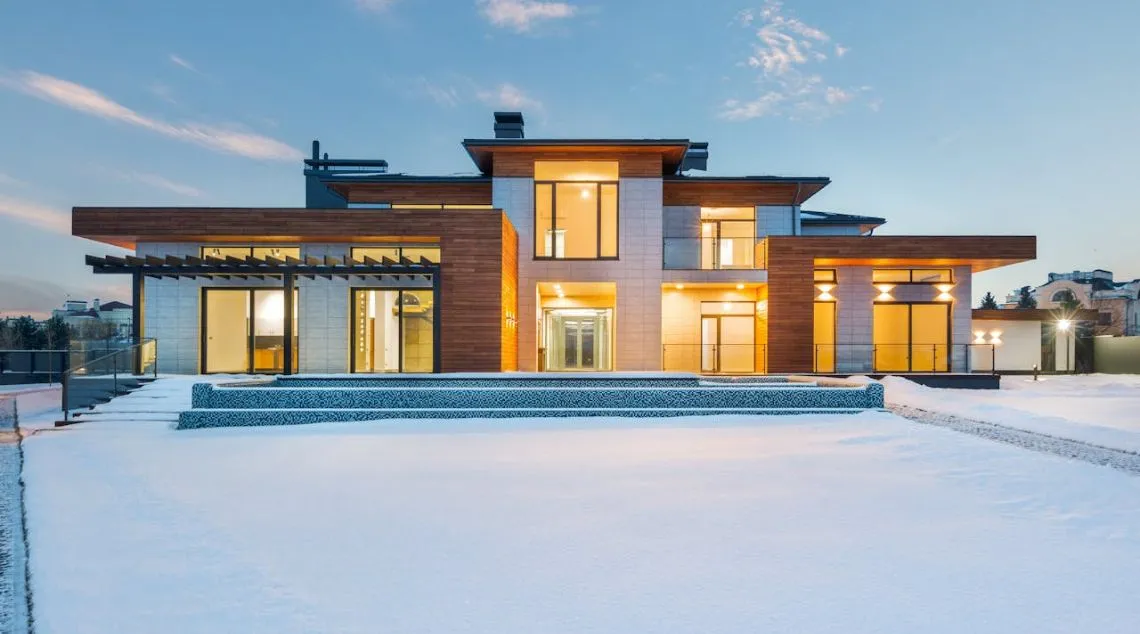Once we understand the prevalence and impact of light pollution, it’s natural to want to take action. What often follows is a powerful drive towards Big Change — either by tackling local legislation or noticing the nearby commercial light installations.
There’s much you can do at home to prevent light pollution in Texas. One aspect that’s often overlooked is the impact of indoor lighting fixtures. But isn’t light pollution a problem with outdoor lights? Technically, yes. However, bright indoor light rays often manage to find their way out. When this happens, they don’t just contribute to skyglow and glare: they can also constitute light trespass, affecting neighboring families, pets, and properties.
About Light Trespass
“Light trespass” occurs when the source of the light installed on one property can be seen from any other property, invading someone else’s home, yard, or space. This can often take very frustrating forms, such as a bright, unshielded light that can be seen directly through a window onto a neighbors space or a common area, invading the area and reducing other’s enjoyment of their property.
When this happens, light trespass can cause ill will between neighbors and may even result in an angry letter or an HOA complaint. The extra, unwanted light keeps bedrooms and gardens from being truly dark, disrupting sleep cycles and night critters.
4 Quick Fixes for Your Indoor Lights
Ultimately, all that “escaped” light is wasted, feeding the overall skyglow and raising your electricity bills. And yet, indoor light trespass is avoidable. We can nearly eliminate it with four simple steps!

1. Install barriers
The best way to keep indoor lights from becoming an outdoor nuisance is to place physical barriers across all the escape routes. This can include incorporating shades to keep you from seeing the light source directly. Or, it could be elegant drapery, heavier blackout curtains, or blinds if the light is unshielded.
There are only two rules when you go the route of window coverings: the fabric must be thick enough to truly block the light, and the installation must be big enough to cover all edges. This doesn’t mean you need floor-length curtains in every room. Make sure any curtains fall at least one inch below the lower end of the window and two inches wider.
In addition, if you prefer light, sheer, or see-through curtains for your sun porch or living room, add an extra, thicker layer to close the window at nighttime.
Bonus: thicker blackout curtains often help improve a home’s insulation, keeping your AC consumption down and saving money.
2. Turn away from the windows
Next, examine the source of the light. Whether it’s from lamps, chandeliers, or even holiday decor, ensuring unshielded light sources don’t directly face any windows, doors, or skylights is essential.
This may require changing the position of unshielded fixtures, moving them closer to a corner or wall divider. Meanwhile, most floor or table lamps can often be turned or tilted, which helps you ensure they face the middle of the room rather than the surrounding windows. And even those that can’t be moved usually have shades or covers that can help you direct the light where you want it.
3. Check your reflection
Light usually travels in a straight line. However, it can change its trajectory in seemingly unpredictable ways depending on where it lands. When this happens, it’s easy for your new decorative fairy lights to get “redirected” toward a neighbor’s windows.
The most common culprit to redirect light is mirrors. However, technically any wide smooth surface can direct this glare toward an inappropriate place. This includes glass dividers, polished counters, aluminum sheets (such as the ones covering large kitchen appliances), or enameled tiles. Take a few seconds to identify where they are and how they impact your light output.
4. Go outside and check
Finally, it’s time to see if your fixes pass the test. Depending on where you live, this part may be the easiest — or it may require you to wait for some company and a low-traffic day: take a look at your place from the outside with your lights turned on!
Wait until after dark, take a quick tour around your house, and check each one of your windows for any escaping lights. If you live in a built-up area with many competing light sources, you may need someone else inside to turn the lights on and off so you can check if there’s a difference. Ideally, there shouldn’t be!
The previous three steps will be enough to keep all your windows and doors looking appropriately dark the first time. If this happens, you’ll be able to see your impact on your community.
Why Should We Keep Indoor Lights from Spilling Outdoors?
All around the world, light pollution has already changed the face of our night skies. This has resulted in a steep price for humans and nature: from the loss of astronomical observation sites to lost birds and altered butterfly migration patterns.
You can learn more about the impact of light pollution HERE. Then, you can help us reverse it by taking action on your property, volunteering, and donating to help make these changes across the beautiful State of Texas.
Image Credit: Photo by Max Vakhtbovycn


